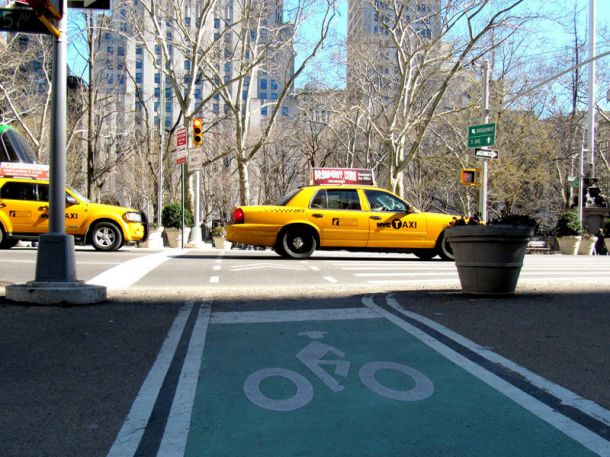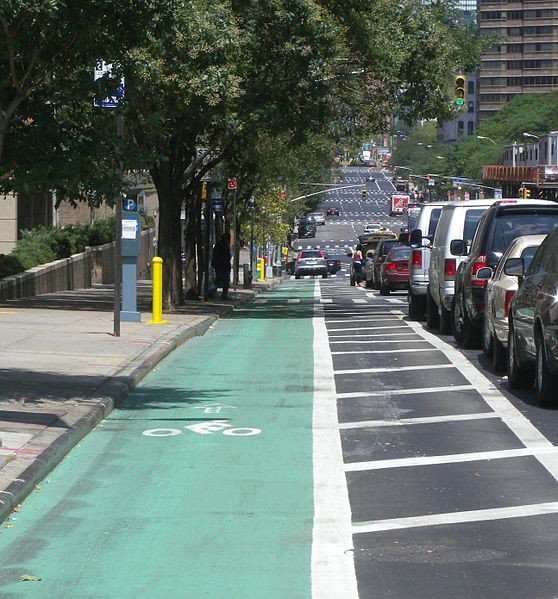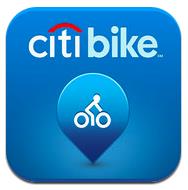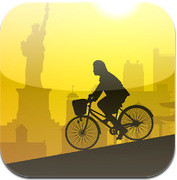
When you think of getting around New York City, biking might not be the first option that springs to mind. While many internationals are probably accustomed to cycling being a common mode of transportation, in the US it tends to be reserved as a recreational activity and it’s not quite as common to see cyclists commuting on main streets. In New York City, however, the number of cycling commuters has increased 262% since 2000, and with the recent launch of the CitiBike bike sharing program, there looks to be a steady increase in the number of cyclists on the road.The bike share program, launched in May, 2013 has been a controversial addition to the city, perhaps best illustrated by Jon Stewart’s amusing segment of interviews in which the main complaints about the program seem to be that the bike stations are taking away spaces from cars without local residents’ approval. Because, as any New Yorker knows – the city needs more cars on the streets.So if you want to take advantage of the new program, or want to use your own bike to get around, what do you need to know?
Where Can I Ride?
 While the streets of New York can be congested, the city’s busiest streets are well served by bike paths or lanes to ease bike commuting. Through initiative taken by Mayor Bloomberg, in just three years, the Department of Transportation added 200 miles of bike lanes in all five boroughs. Though much more prevalent in Brooklyn, Manhattan, and the Bronx, all five boroughs have lanes in place.Bike paths, separated from motorized traffic by barriers, can be found across bridges, around the border of Manhattan, and through many of the city’s parks. Bike lanes and cycle tracks are integrated into regular traffic routes, and labeled for bicycle use. Unlike cycle tracks, bike lanes often have no separation from the main road and riders should take note that often taxis will pull into bike lanes to let off passengers – a potentially dangerous situation.You should plan your route beforehand in order to make the most of the city’s bike lanes. There are many resources to do this, but some apps we found particularly helpful are:
While the streets of New York can be congested, the city’s busiest streets are well served by bike paths or lanes to ease bike commuting. Through initiative taken by Mayor Bloomberg, in just three years, the Department of Transportation added 200 miles of bike lanes in all five boroughs. Though much more prevalent in Brooklyn, Manhattan, and the Bronx, all five boroughs have lanes in place.Bike paths, separated from motorized traffic by barriers, can be found across bridges, around the border of Manhattan, and through many of the city’s parks. Bike lanes and cycle tracks are integrated into regular traffic routes, and labeled for bicycle use. Unlike cycle tracks, bike lanes often have no separation from the main road and riders should take note that often taxis will pull into bike lanes to let off passengers – a potentially dangerous situation.You should plan your route beforehand in order to make the most of the city’s bike lanes. There are many resources to do this, but some apps we found particularly helpful are: Ride the City ($1.99) available for Android and iPhone, this app helps you plot a safe bike route from point A to point B. It will find the shortest distance between the two points while avoiding roads that aren’t meant for biking such as highways or high-congestion areas. It will also steer your route to use bike lanes wherever possible and avoid steep inclines. CitiBike App
Ride the City ($1.99) available for Android and iPhone, this app helps you plot a safe bike route from point A to point B. It will find the shortest distance between the two points while avoiding roads that aren’t meant for biking such as highways or high-congestion areas. It will also steer your route to use bike lanes wherever possible and avoid steep inclines. CitiBike App (Free) To help take advantage of New York’s new bike share program, the Citi Bike App offers information including route planning, where the docking stations are located, bike availability and, coming soon, where to find the best drinks, food, and attractions in the city along your route.Where Can I Park?Knowing where to park can be a bigger issue that it seems. If you chain your bike to items on the sidewalk such as a lamppost or scaffolding you are in danger of having it confiscated by the police. The good news is that there are bike racks in 7,366 locations throughout the city and all NYC parking lots and garages which have spaces for more than 100 vehicles are required by law to offer bike parking as well.To find these bike parking locations you can use the DOT’s CityRack map or you can use apps such as:New York Bike
(Free) To help take advantage of New York’s new bike share program, the Citi Bike App offers information including route planning, where the docking stations are located, bike availability and, coming soon, where to find the best drinks, food, and attractions in the city along your route.Where Can I Park?Knowing where to park can be a bigger issue that it seems. If you chain your bike to items on the sidewalk such as a lamppost or scaffolding you are in danger of having it confiscated by the police. The good news is that there are bike racks in 7,366 locations throughout the city and all NYC parking lots and garages which have spaces for more than 100 vehicles are required by law to offer bike parking as well.To find these bike parking locations you can use the DOT’s CityRack map or you can use apps such as:New York Bike ($.99) This app marks secure parking areas and bike friendly businesses as well as helping you plan your route. The app also accounts for congested areas and hills that could increase your commute time. Another convenient feature is the ability to mark dangerous intersections and record your route so you can figure out which routes are best for your commute.What are the Laws?The Department of Transportation has a number of bike laws regarding equipment, riding and safety that all cyclists must follow.All riders must equip their bicycles with:
($.99) This app marks secure parking areas and bike friendly businesses as well as helping you plan your route. The app also accounts for congested areas and hills that could increase your commute time. Another convenient feature is the ability to mark dangerous intersections and record your route so you can figure out which routes are best for your commute.What are the Laws?The Department of Transportation has a number of bike laws regarding equipment, riding and safety that all cyclists must follow.All riders must equip their bicycles with:
- White headlamp and red tail light from dusk to dawn
- A bell or other audible signal to alert other cyclists
- Reflectors on wheels and the front and back of the bike
- All bikes, including fixed gear, must have working brakes.
Regarding safety, riders are required to yield to pedestrians, vehicles and other cyclists while on the road. Helmets are not required by New York state law for cyclists above the age of 13, but are recommended for all riders.There are also a number of things that riders are not allowed to do while riding on a bicycle such as riding on sidewalks, taking on more riders than a bike was meant for, and listening to headphones in both ears. Make sure you are an informed rider by reading the full list of restrictions on the Department of Transportation website.
Biking Resources
Learn to Ride:If you’re nervous about riding, Bike New York has a number of resources to teach New Yorkers all about biking in the city and maintaining a safe bicycle. From adult riding lessons to Winter Riding 101, classes range from beginner to advanced levels and cover a variety of topics. For a full list of the organization’s free classes, visit Bike New York’s education page.Bike for Fun:If you like to bike for fun, there are a number of biking events for recreational biking in the city. One fun annual event is the 5 Boro Bike Tour, which takes place each spring and closes a number of New York’s busiest bridges and routes exclusively for bike traffic. This is a great, beginner-level ride through all five boroughs that gives you a look at the city you can’t get on foot or underground. There are also a number of smaller events throughout the year organized by New York’s biking organizations, including Bike New York and Transportation Alternative’s Bike NYC.

